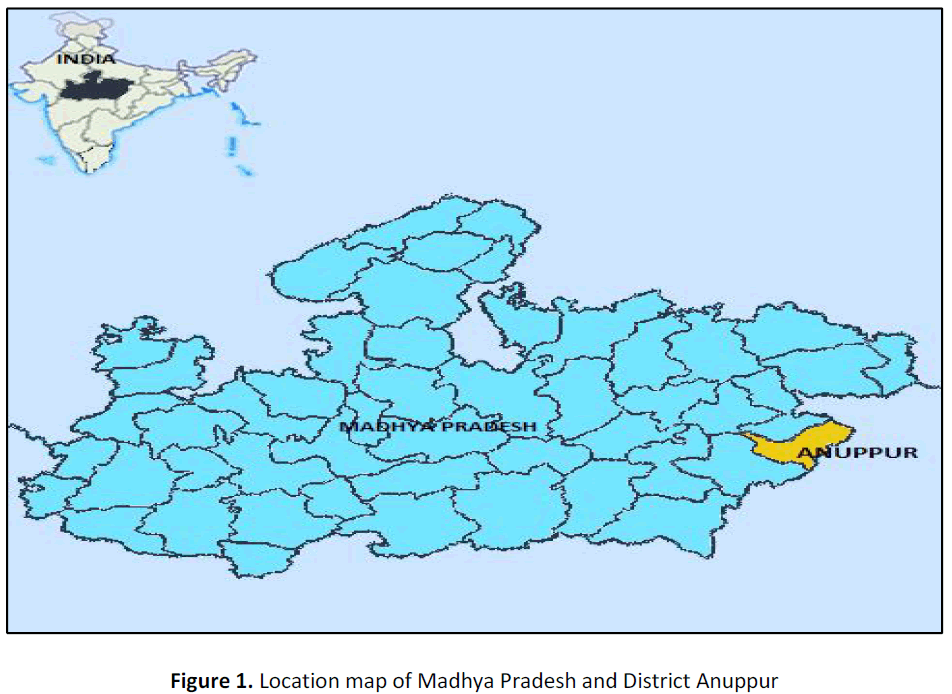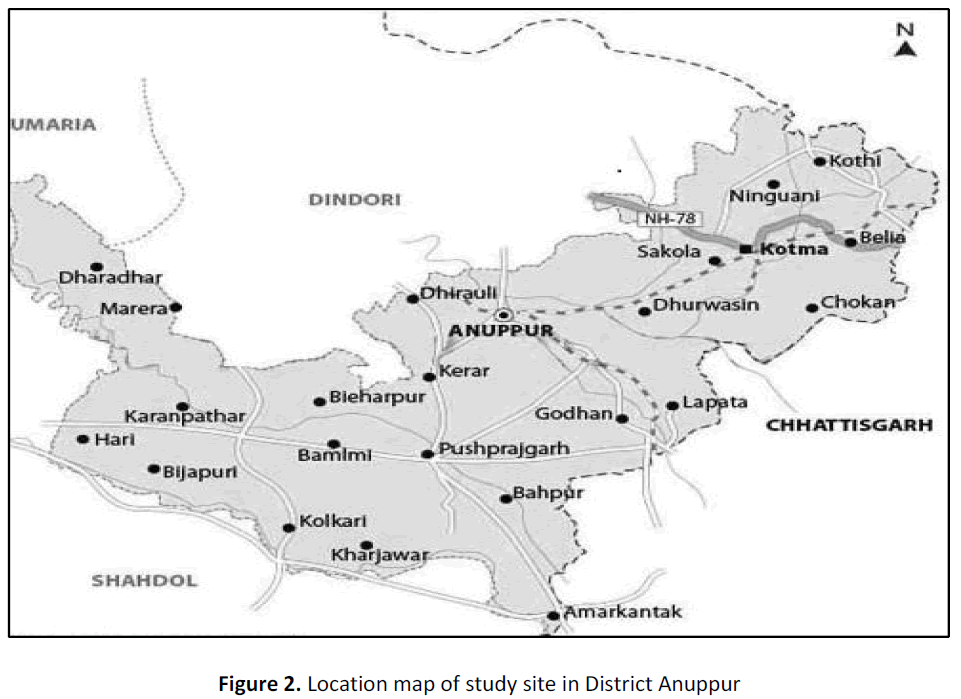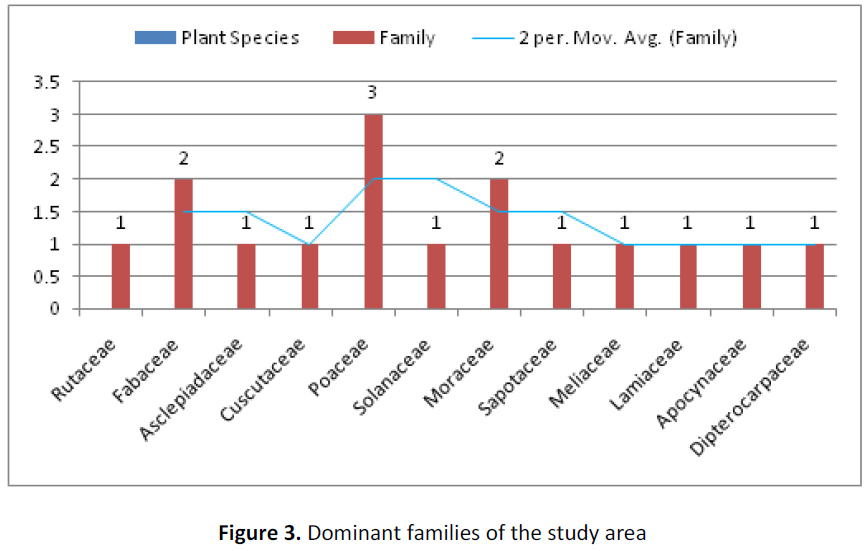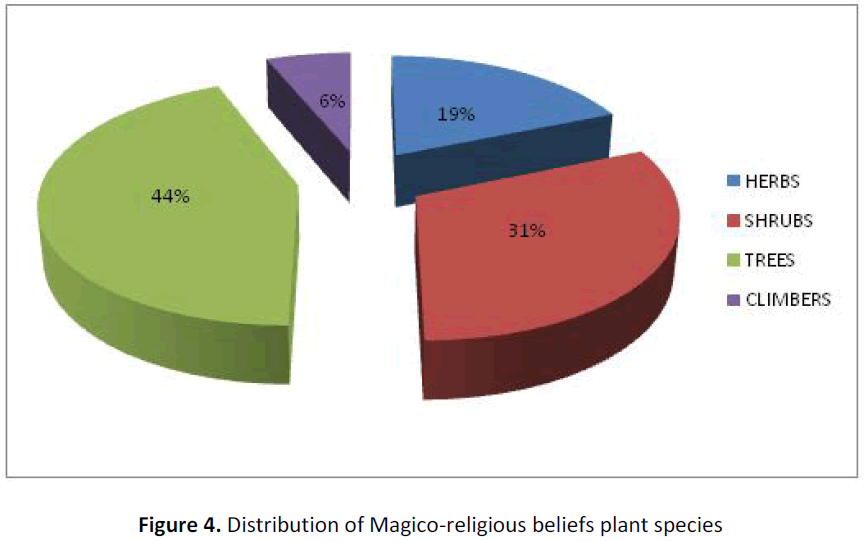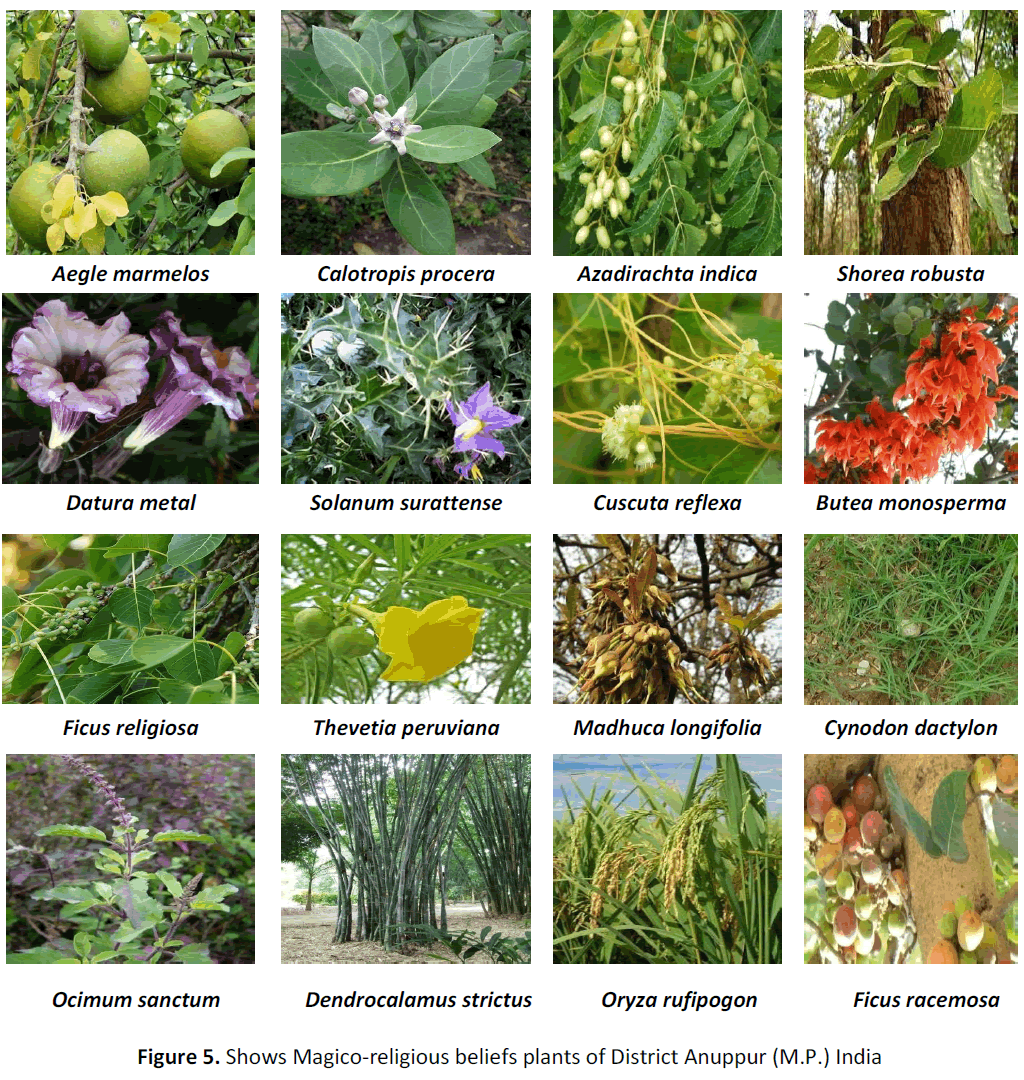ISSN : 2348-9502
American Journal of Ethnomedicine
Indigenous Knowledge of Traditional Magicoreligious Beliefs Plants of District Anuppur, Madhya Pradesh India
Department of Botany, Govt. College Birsinghpur Pali, District- Umaria-484551, (Madhya Pradesh) India
Abstract
The present paper highlights some Traditional Magico-religious beliefs. They believe that some Gods and deities reside in forests. So they conserve some Plant species due to the Traditional Magico-religious Plants species attached resulting in some Patches of forest being conserved. The paper deals with Traditional Magico-religious beliefs Plants of the district Anuppur Tribals of Madhya Pradesh fascinating natural forest conservation.
Keywords
Tribes, Magico-religious, Traditional, Forest conservation.
INTRODUCTION
District Anuppur is one of the important district of Madhya Pradesh. This district is located in the central part of India. It is lying between 23˚15’ to 24˚N Latitude and 81˚0’ to 81˚45’E longitude. The total area of 3701 Sq. Km extends 80 Km. from east to west and 70 Km. from North to South. The district is habited by large number of Tribals viz. Gond, Baiga, Panika, Kol, Agaria etc. Who live in the remote forest areas and present a unique Physical rainfall of 244.68mm and on the whole district has a salubrious climate. District Anuppur is surrounded by Korea district (C.G.) in east, Shahdol & Umaria district in west, Shahdol district in north and Dindori, Bilaspur (C.G.) district in the south area. It is called Plateau of Beghel- Khand and due to very rich diverse flora, of district Anuppur Madhya Pradesh, Central India [1]. (Figure 1-2).
MATERIAL AND METHODS
The study was conducted one year in prescribed standard methodology of Traditional Magico-religious beliefs studies frequent field visits were regularly conducted throughout the year in the Pusprajgarh (Rajendragram) block Tribal areas of the District [2]. The Plants were collected with the help of standard flora and other local People. Religious or methological beliefs of people about super natural or magical properties and powers and about certain events and objects is known as Traditional Magico-religious beliefs and a religious interdict forbidden by custom or on moral or religious grounds is called Taboo [3]. The area has been reported for Ethnobotanical Studies interest [1,4,6,8].
Some Traditional Magico-religious beliefs plants alphabetically,Family name and Local name enumerated below are conserved by Anuppur district Tribals along with reasons for their conservation [5].(Figure 3-4).
1. Aegle marmelos, Corr. (Rutaceae). ‘Bel’. Leaves are used to worship Gods. Fruits used to worship Lord Shiva.
2. Azadirachta indica A. Juss (Meliaceae), ‘Neem’. This plant is an abode of Goddess of small-pox. Dried leaves are burnt to kill mosquitoes. Fruits are used as insect killer in granary. Tribals conserve this tree for shade and medicinal use.
3. Butea monosperma, Lamk. (Fabaceae), ‘Palas’. Leaves of Plant are used to worship and make crown of Lord Shiva’s idol. Flowers are used to worship and pay floral tributes to departed soul.
4. Calotropis procera R. Br. (Asclepiadaceae)’ Aak; ‘Madaar’. Flowers of the Plant are used to pay floral tributes to Lord Shiva. Latex of the Plant are used to wash Lord Shiva‘s head.
5. Cuscuta reflexa Roxb. (Cuscutaceae), ‘Amerbel’. People belongings to the ‘Agariya’ tribe worship iron as their god and worship iron tools. To pay homage to their Gods and to save them from devils (Rusts) tie up twinning stems of plants on tools.
6. Cynodon dactylon Pers. (Poaceae), ‘Doobi’. Grass is used in all religious occasions for sprinkling water. It is believed to have its power to turn simple water in to holy water. It is also used to make everything devout by tying the culms on upper arm.
7. Datura metal L. (Solanaceae), ‘Dhatura’. Fruits and seeds are used to worship Lord Shiva. Fruit paste is mixed with powder of dried seeds of Plant and a little bit consumed as grace.
8. Dendrocalamus strictus Nees. (Poaceae), ‘Baans’. Two ships of immature culms are placed in a cross between a young boy and a girl at the time of their marriage. It is through to be efficient in ending the separation phase before marriage.
9. Ficus racemosa L. (Moraceae), ‘Dumer’. It is believed that the flowers, have the capacity to make anything, eternal.
10. Ficus religiosa L. (Moraceae), ‘Peepal’. It is believed that this tree is an abode of Gods and departed souls. Any harm to this plant results in a catastrophe to the area and the offending person.
11. Madhuca longifolia (J. Koenig) Macbr. Var. (Sapotaceae), ‘Mahua’. Dried branch of the tree is used to dispelled bad spirits by erecting it in front of house. They tie a red flag at top of it. This mast is called ‘Hanumankhamb’.
12. Ocimum sanctum L. (Lamiaceae), ‘Tulsi’. Plant is considered as a sacred one and is planted is in every Hindu based tribe‘s abode. It is believed that all God and Goddess visit those houses were this plant is in the courtyard.
13. Oryza rufipogon Griff. (Poaceae), ‘Pasaidhan’. Grains are considered to be sacred Grains are coloured with Turmeric powder on omen reasons and donated to ‘Ojhas’ or ‘Guniyas’.
14. Solanum surattense Burm. f. (Solanaceae), ‘Bhatkataiya’. Fruits are crushed by girls for safety of their family members whilst praying for them.
15. Shorea robusta Gaertn f. (Dipterocarpaceae) ‘Sarai’. Its whole plants uses of worshiping of God.
16. Thevetia peruviana (L.) Lippold (Apocynaceae), ‘Pili Kaner’. Flowers and fruits are offered to Lord Shiva in benison and bereavement.
RESULTS AND DISCUSSION
During present research work of district Anuppur sixteen plants species belonging to 12 families were recorded as effective remedies used by local people to nature conservation [6]. Due to many reasons the habitat of several resources may get destroyed or changed drastically [7]. It lead off the loss of resources itself. To prevent the damaging habitat fast regenerative capacity is needed. So there a great need to in dulge in the doctrine of “Development through conservation which will lead to development without causing any harm to the resources thus leading to conservation [8]. Pusprajgarh block study sites Tribals beliefs and sentiments are attached with forests and hence they inted for its conservations Tribals even have marked individual species and protected them as some groups are named after the name of plant and they respect these plants species much conservation [9]. Many plants species are utilised by Tribals in different Traditional Magico-religious Plants ways but this does not affect their conservational aspects [10,11]. (Figure 5).
ACKNOWLEDGEMENT
The author are thankful to Tribals of the district Anuppur for their co-operation and sharing Traditional Knowledge during research work.
REFERENCES
- Ahirwar, Ramesh Kumar (2010). Ethnomedicinal uses of plant roots from Shahdol district of M.P. India. Ind. J. Appl. Pure Bio. 25 (1):71-76.
- Biswas, T.K. and Mukherjee, B. (2003) Plant Medicines of Indian Origin for Wound Healing Activity: A Review. International Journal of Lower Extremity Wounds, 2, 25- 39.
- Banerjee, S.C.1980. Flora and Fauna in Sanskrit Literature Nayaprakash, Calcutta 1- 192.
- Jain, S.K. 1963. Magico-religious beliefs about plants among the Adivasis of Bastar, Madhya Pradesh. Jour. Mythic Soc. 54(3):73-94.
- Kala, C.P. (2005) Indigenous Uses, Population Density and Conservation of Threatened Medicinal Plants in Protected Areas of the Indian Himalayas. Conservation Biology, 19, 368-378. https:// dx.doi.org/10.1111/j.1523-1739.2005.0060 2.x.
- Khan. A.A, Agnihotri, S.K, Singh M.K & Ahirwar, R.K. 2008. Enumaration of certain Angiospermic plants used by Baiga tribe for Conservations of Plants Species. Plant Archives. 8. (I) 289-291.
- Maheswari, J.K. 1964. A Contribution to the Flora Kanha National Park, Madhya Pradesh. Bull. Bot. surv. India. 5(2): 177- 140.
- Sexena, H.O .1986 .Observations on the Ethnobotany of Madhya Pradesh. Bull. Bot. Surv. India. 28:149-156.
- Singh N.P, Khanna K.K, Mudgal V& Dixit R.D, Flora of Madhya Pradesh (Botanical survey of India).Vol. 3, 2001.
- Verma, P., Khan, A.A. and Singh, K.K. (1995) Traditional phytotherapy among the Baiga Tribe of Shahdol District of Madhya Pradesh, India. Ethnobotany, 7, 69-73.
- Ahirwar, R.K. (2015) Diversity of Ethnomedicinal Plants in Boridand Forest of District Korea, Chhattisgarh, India. American Journal of Plant Sciences. 6, 413- 425. https://dx.doi.org/10.4236/ajps. 2015. 62047.
Open Access Journals
- Aquaculture & Veterinary Science
- Chemistry & Chemical Sciences
- Clinical Sciences
- Engineering
- General Science
- Genetics & Molecular Biology
- Health Care & Nursing
- Immunology & Microbiology
- Materials Science
- Mathematics & Physics
- Medical Sciences
- Neurology & Psychiatry
- Oncology & Cancer Science
- Pharmaceutical Sciences
